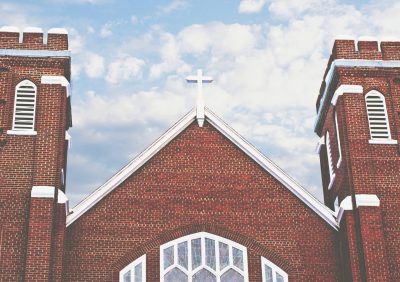When it comes time to finance your church project, preparation is critical. Understanding church loan requirements can help your organization secure the funding you need. Whether the organization is a church, temple, religious school, convent, monastery, or
- Purchasing land and existing structures
- Acquiring raw land to build new structures
- Building expansion
- Building repairs or renovation
Whatever the purpose, although church loan requirements vary from lender to lender, knowing what to expect in the church loan application puts your organization ahead of the game.
What is a Church Loan?
Although church building loans are specific types of commercial real estate loans, church loan requirements generally share the same conditions as any commercial loan. For example, church financing lenders want to see good credit scores and proof of sound financial management. In addition, if it is a loan for church construction, the lender expects to see the plans and budget for the project. In addition, some lenders require collateral to protect their investments in case of default.
Typically, when searching for a church construction loan or small church loan, you’ll find different types of loans and terms available. Most common are fixed-rate, term loans from 5 to 30 years. Other loans, typically ones that carry higher interest rates, might accept no personal guarantees or collateral, less than good credit ratings, or limited loan amounts.
Church Loan Requirements
Before applying for any loan, be sure and use the following checklist to gather the appropriate documents. Typical church loan requirements include:
- Last three years of financials, including income statements and balance sheets
- Number of giving units (groups, family members, recurring supporters of the organization)
- Total organization membership numbers
- Present property value (if there is a property)
- Projected construction budget
- Organization’s fundraising efforts and amount to be raised
- Information about previous fundraising efforts
- Organization’s history
- Background of the organization’s leadership and all key personnel
- Organization’s current and proposed locations
- Mission statement and primary ministries
- Community contributions
- Congregation demographics
In addition to the church loan requirements listed, church loan underwriting necessitates a review of the organization’s financial ratios to determine whether the church can repay the loan. Lenders look at the debt coverage ratio (DCR), which considers the organization’s cash flow, loan to value ratio (LTV), which looks at the loan amount in relation to the appraised real estate, and debt-to-income ratio, which analyzes the loan amount and long-term debt compared to total income.
No matter how prepared your organization is, you can expect the church loan process to range from a few weeks to a few months. When comparing church loan financing options, be sure you use the available church loan calculators when shopping for church loan rates from different lenders.
Need a Church Loan Sooner?
If time is the priority and you need funding for a church emergency, the bank requirements for a church loan will slow you down. It’s smarter to seek an alternative source of funding like a church line of credit.
A church line of credit provides an ongoing source of money available to your organization for whatever needs you see fit. While church loan requirements often specify what the loan can and can’t be used for, a church line of credit can be used for minor repairs, upgrading technology, meeting payroll, or any need (big or small) the organization requires. In addition, church loan requirements often make the application process quite extensive, putting a heavy burden on church staff and financial officers. A church line of credit application process is much simpler and requires much less documentation and preparation.
A line of credit is often used to help even out cash flow. Like all businesses, churches experience periods when money is plentiful and periods when money is tight. Having extra cash on hand can really help get an organization over a hump and back on track, especially in an unstable financial environment.
Once the nonprofit line of credit application has been approved, you’ll receive the money in the form of a revolving credit line, similar to a credit card line. The money is available to the church when needed, and the organization can always access whatever money remains in the account. When you borrow money, you are only charged fees on the money that has been withdrawn. Then, when you repay money to the line, the funds are available again—without applying for a new loan. Also, when the line is back to its total amount, there is no cost for the church. To sum it up: Borrowers draw funds when needed, pay the money back, and have the money available again for their next need.
With the Financing Solutions Line of Credit, faith-based and nonprofit organizations always have the benefits of a more straightforward application process, plus:
- There are no costs to set it up or keep it in place
- There’s an easy 2-minute application online application
- If approved, you’ll receive a same-day, no-obligation offer letter
- The fastest setup, 48-72 hours
- Once you get the line of credit, requests for funds are wired to your bank in minutes
- You can use your line of credit whenever needed
- Inexpensive when used (low fees)
- There are no restrictions in place or collateral required
- No personal guarantee is required, either
- Financing Solutions is a leading provider of lines of credit
- We are a reputable company with an A+ & 5-star rating
- You can pay off the line whenever you are ready
- The credit line renews yearly and is easy to renew
- You have a secured account portal access 24 x 7
A church line of credit is a good funding resource that’s available whenever your church needs it, without the heavy burden of church loan requirements. If you want to see if your church would be approved and for how much, please fill out the no-obligation, 2-minute line of credit application here.